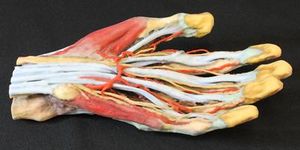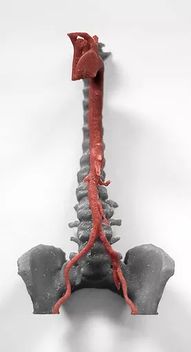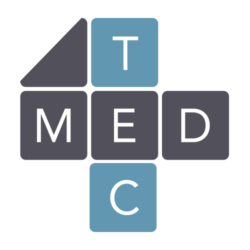Difference between revisions of "Project Week 25/Slicer and 3D Printing"
From NAMIC Wiki
| (10 intermediate revisions by 3 users not shown) | |||
| Line 3: | Line 3: | ||
Back to [[Project_Week_25#Projects|Projects List]] | Back to [[Project_Week_25#Projects|Projects List]] | ||
| − | |||
==Key Investigators== | ==Key Investigators== | ||
<!-- Key Investigator bullet points --> | <!-- Key Investigator bullet points --> | ||
| − | *Juan Ruiz Alzola ( | + | *[http://juanruizalzola.com/about-juan/ Juan Ruiz Alzola] (University of Las Palmas de Gran Canaria, Spain) |
| − | *Michael Halle (Harvard University) | + | *[http://www.spl.harvard.edu/pages/People/halazar Michael Halle] (Brigham and Women's Hospital, Harvard Medical School, USA) |
| + | *[http://isgwww.cs.uni-magdeburg.de/cas/ Christian Hansen] (University of Magdeburg, Germany) | ||
| + | *[mailto:nayra.pumar@ulpgc.es Nayra Pumar Carreras] (University of Las Palmas de Gran Canaria, Spain) | ||
==Project Description== | ==Project Description== | ||
| Line 18: | Line 19: | ||
|- style="vertical-align:top;" | |- style="vertical-align:top;" | ||
|<!-- Objective bullet points --> | |<!-- Objective bullet points --> | ||
| − | + | *Develop and document a workflow to process the acquired DICOM images | |
| − | + | *Improve the segmentation mechanics in order to extract the data to print | |
| − | + | *Prepare the STL files for printing: checking the mesh and creating the support structures | |
| − | + | ||
| − | |||
|<!-- Approach and Plan bullet points --> | |<!-- Approach and Plan bullet points --> | ||
| − | + | *'''Before Project Week:''' | |
| − | + | **Know the "state of the art" of 3d printer options and materials | |
| − | + | **Diving into the DICOM and NRRD file structure | |
| − | |||
| − | |||
| − | |||
| − | |||
| − | |||
| − | |||
| − | |||
| − | |||
| − | |||
| − | |||
| + | *'''During Project Week:''' | ||
| + | **Establish the guidelines for the segmentation procedures | ||
| + | **Identify the STL export issues | ||
| + | |<!-- Progress and Next steps --> | ||
| + | *'''Progress''' | ||
| + | ** We've clarified the segmentation procedure using the new segmentation editor on the last Slicer version | ||
| + | ** Also we've gotten some fresh information about prototypes materials used by other groups in order to create their lifelike models and phantoms (gellatins, silicons, plastics and such) | ||
| + | *'''Next steps''' | ||
| + | ** Start printing our first phantom prototype parts and building the rest of the needed parts with the other complementary materials | ||
| + | ** Stablish a workflow for segmentation, as generalistic as possible in order to make it applicable for as many different segmentation needs as possible (focusing on how you use the segmentation editor, not on the actual anatomical knowledge or the different DICOM sources availables) | ||
| + | ** Identify the real needs of our different cooperation partners in the African countries so we can build toguether models and training tools that are really useful for them and also easy to maintain and build with their actual resources | ||
|} | |} | ||
==Illustrations== | ==Illustrations== | ||
| − | [[ | + | {| |
| − | [[ | + | |[[image:Nayra1.jpg|thumb|3D printed model (hand colored)]] ||[[image:Nayra2.jpg|thumb|3D print of a human aorta]] ||[[image:Marilola4.png|thumb|[https://mt4sd.ulpgc.es/en Medical Technology for Sustainable Development]]] |
| − | [[ | + | |} |
==Background and References== | ==Background and References== | ||
<!-- Use this space for information that may help people better understand your project, like links to papers, source code, or data --> | <!-- Use this space for information that may help people better understand your project, like links to papers, source code, or data --> | ||
| + | |||
| + | ==Possible application areas / IDEAS == | ||
| + | *Life size models of different anatomical structures: normal and pathological | ||
| + | *Create life like models, that provide a sensorial feeling as close as the "organic" have | ||
Latest revision as of 09:30, 30 June 2017
Home < Project Week 25 < Slicer and 3D Printing
Back to Projects List
Key Investigators
- Juan Ruiz Alzola (University of Las Palmas de Gran Canaria, Spain)
- Michael Halle (Brigham and Women's Hospital, Harvard Medical School, USA)
- Christian Hansen (University of Magdeburg, Germany)
- Nayra Pumar Carreras (University of Las Palmas de Gran Canaria, Spain)
Project Description
From DICOM data to a 3D print of anatomical models for training: anatomy classes and/or surgical planning
| Objective | Approach and Plan | Progress and Next Steps |
|---|---|---|
|
|
|
Illustrations
Background and References
Possible application areas / IDEAS
- Life size models of different anatomical structures: normal and pathological
- Create life like models, that provide a sensorial feeling as close as the "organic" have


